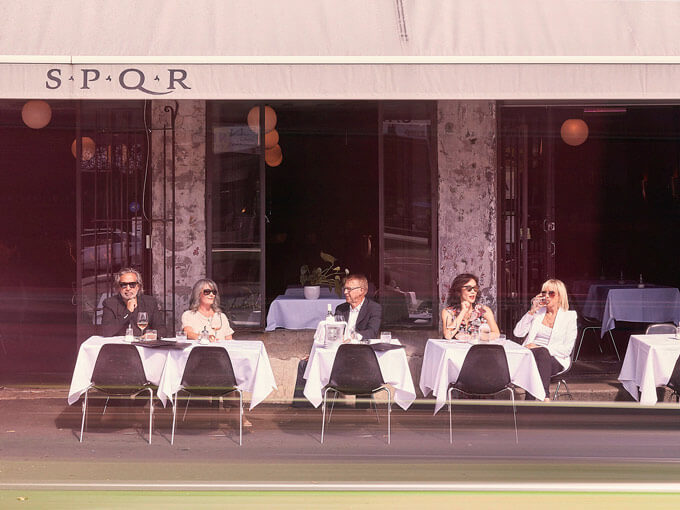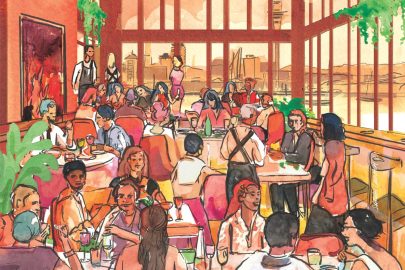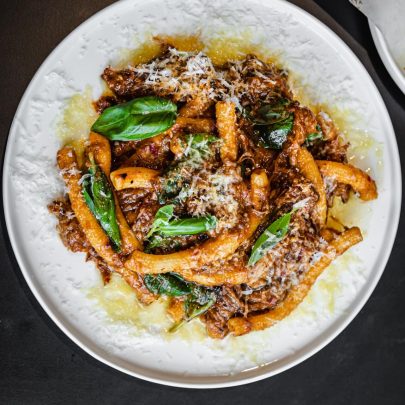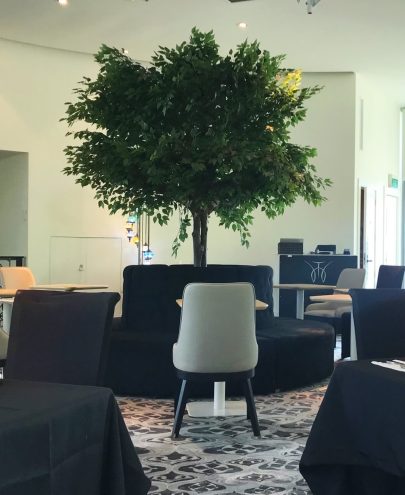Nov 14, 2018 Restaurants
Chicken cooked with banana and served with Mateus rosé was once the height of cool — now it’s plant-based protein and sparkling water. Five hospo stalwarts reflect on the evolution of Auckland’s restaurant scene.
Tony Adcock
When we started Le Brie in 1975, there were only a few old dine-and-dance-type restaurants and we were at the start of the change. I was 26. I’d been to hotel management school at East Sydney Tech and I got interested in food on my OE. I hitchhiked through Europe and found food I’d never had before — sardines, squid, octopus.
When we tried to put on calamari at Le Brie in 1979, we couldn’t find it anywhere. The supplier had some frozen stuff they called bait, so we bought that. The first time we put it on the menu, we sold about six portions a day. The second time, a year later, it was the top seller. People’s tastebuds change.
Back then, we were having to lead the customer, coax them into changes. The menu was all French, so we’d go through and translate it all. Now the customer’s telling you what they want, because we’ve got the internet and TV cooking programmes.
At Le Brie we had a lot of lawyers during the day because we were down by the courts. At night, it was mainly people who had experienced things overseas. The day we opened — luckily, as it happened, because we didn’t have any money — we had 30 for lunch and I think we did 60 for dinner, and it just kept going, for 19 years in three different places.
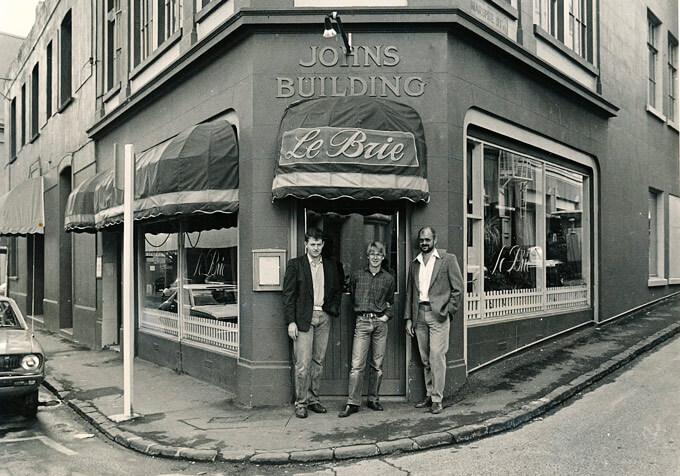
Even in 75, especially on Fridays, once those guys were there at lunchtime they didn’t go back. There was far more drinking at lunchtime back then. About 1980, we opened Carthew’s on Ponsonby Rd. We were the first ones to get a licence for Sunday brunch. We had jazz music — Beaver would sing there — and we’d start with black velvet Champagne, which was Champagne with a little Guinness and an oyster in it. People would be there all day. It was huge.
We all used to party a lot. I don’t think many people in restaurants thought of it as a business. We all knew each other and we’d go out and have a laugh, drinking and smoking pot.
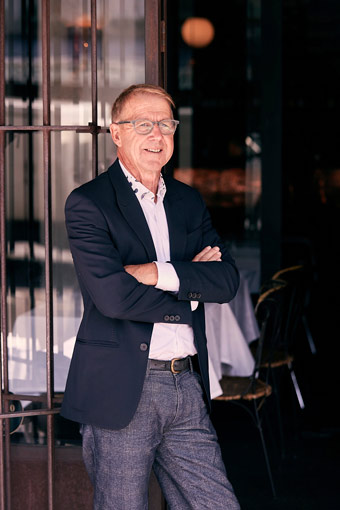
In the 80s, Club Mirage was the place — that was Emerald Gilmour’s. It was very excessive — the Gloss look was big. One night, after finishing service at Carthew’s, we went to Club Mirage, then went straight to work from the club the next morning.
We opened Harbourside in 1988, and were really busy from the start. After one long lunch [Auckland car-industry big wig] Jerry Clayton jumped off the balcony into the drink for a dare.
Even though the crash happened in 87, the recession didn’t really start until 1991, when the banks called in their money. In one year, turnover at Harbourside dropped by a million dollars. Luckily, at the same time the Employment Contracts Act came in. We no longer had to pay double time on Sunday.
Restaurants are basically in the entertainment industry these days — it’s about the whole experience. It used to be that people would travel a long way just for the food.
After running restaurants for more than 40 years, Tony Adcock is now a private restaurant consultant and in-house business mentor at the Restaurant Association of New Zealand.
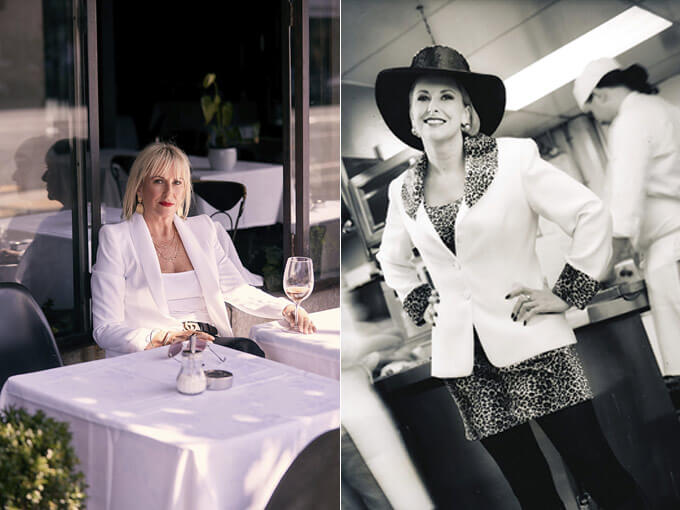
Judith Tabron
We’re definitely seeing the trend of healthy eating at the moment. No one says they’re on a diet any more, they just say they’re eating healthy. And the sharing trend is fun, but it suits casual dining more than business people. It dumbs down any serving skills, too — you won’t get the food in the right spot any more, it’s just going to get dropped in the middle. We still have a drinking culture, but lots of people have only one glass or a couple — it’s not always a straight-into-a-bottle situation. Port’s no longer the drink but espresso martinis — man!
By the time I was 20, I was head chef at Benjamin’s Bistro at the top of Parnell Rd, then I got the head-chef role at DeBrett’s. I was very under-skilled and the stress caused me to be a bit of a bitch, probably. There was probably a bit much screaming.
When I was 23, I packed my bags and went to London to gain more knowledge, and to be honest, I wouldn’t be here if I hadn’t done that. By the time I went to London, I’d already got to the top and then I had to go back to the bottom and learn what I didn’t know. I worked at L’Escargot and did a lot of work in specialist areas where I knew I had gaps.
I came back to Auckland and pretty much took over as head chef at Sails. That was in 87, just before the crash. Auckland was totally going off and then I watched the revenue at Sails drop by $20,000 a week overnight. It was all huge rents, yahoo… then boom.
But not long after that, in 89, I opened my own restaurant, Ramses, in Newmarket, which I had for nine years. I was 26. It probably seemed like it was a big success — I learnt a lot there, but I didn’t make a lot of money. My father had to step in as accountant and slap me around.
My sister worked at TV3, so we became like a TV3 company caff, and lots of [advertising] agencies were predominant over those years. That’s when bottles of port were consumed and lunch never stopped, it just rolled into dinner. We used to hand out dubious achievement awards to our customers for their behaviour — longest lunch, things like that.
When the night finished, I used to put on my top 10 for the staff and we’d dance. We shouldn’t even have been there at 3 or 4 in the morning — we were only licensed till 1 o’clock — and you could see right into it. We’d be full-on dancing and cars would be going up and down Khyber Pass, but nobody seemed to care.
Although my father was keeping his eye on me, he wouldn’t care that we sat at the bar drinking, as long as everything we drank got rung up on the till. He did watch how much XO Cognac one of the waiters was drinking — he used to mark the bottle. Getting home at 4 or 5am was normal. It’s probably why my first marriage didn’t work.
Different sectors of the business market seem to have more money at different times. Over the years, we saw the property guys have all the money, then it was very much agencies and television and newspapers who were big spenders, and then the insurance guys. Banking’s doing well at the moment.
When I opened Soul in 2001, there had been one America’s Cup but afterwards the Viaduct had faded — Auckland hadn’t yet started its love affair with the waterfront. Then the America’s Cup in 2003 was crazy and it allowed me to pretty much pay off Soul. It’s probably just as busy now, if not busier.
I still meet men who, on learning I own a restaurant, say, “And what does your husband do there?” They assume you say you’re the owner but it’s really your husband. They never consider that it was your investment, not your husband’s investment and you were the little wife doing the flowers. That still happens. I find it offensive. Sometimes I bite back; in later years I’ve said, “Wow, that’s pretty sexist.”
Judith Tabron sold Soul Bar & Bistro to Nourish Group last year.
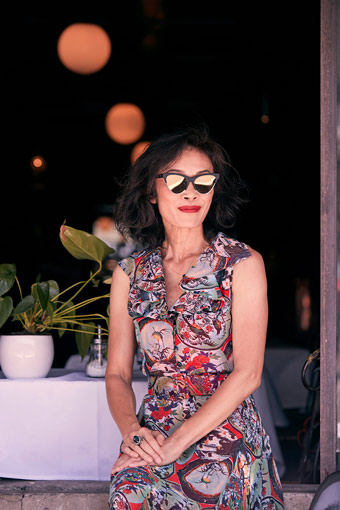
Geeling Ching
Back in the 80s, there was a lot of fruit with proteins. Banana with chicken — oh my god, really? Mango with fish. It’s changed radically and I think one of the great things is the affirmation of seasonality and thinking about air miles. Crikey, diners are fussy now, though. Back then, there was no such thing as gluten intolerance and we certainly hadn’t heard of paleo.
In the 80s, I had been modelling and working in hospo in Sydney, and I moved back to New Zealand for [TV series] Gloss. Then they canned Gloss, so I started working in restaurants. The first was Cin Cin on Quay, with Tonci and Luis Farac, and that was groundbreaking. It was a brasserie — they had wood-fired pizzas!
One night at Cin Cin, a guy came racing through the door screaming and covered in blood, closely followed by another guy with a club in his hand. The whole restaurant scattered — it was like something out of a movie. The guy ended up being locked in the men’s toilet, and I was locked in the women’s toilet with other people. You could hear the guy with the club bashing on the door and the other guy screaming. The police took them both away and we closed the restaurant. Then one of the owners came down and told us off for closing and for letting the traumatised customers leave without paying!
After a couple of years, I became friends with the owners of The Exchange in Parnell and started working there. Parnell was the place to go — there was The Exchange, there was Metropole, there was the VBG [Verandah Bar & Grill].
Then I worked at Tatler & Spectator in Galway St. More hedonistic Champagne drinking. We weren’t open on Sunday, so on Saturday night, you’d finish work and go upstairs and finish all the Champagne, otherwise it would go flat.
When the New Zealand wine industry was in its relative infancy, we were drinking Black Tower and Blue Nun, and various German wines that came in strange-shaped bottles. Mateus rosé was huge. We went through a big period of drinking Yalumba sparkling wine.
Meeting Judith [Tabron] and going to Ramses was the beginning of a 25-year friendship. Jude was in the kitchen every night and I was restaurant manager. Bill Ralston’s programme [The Ralston Group] was on TV3 and after the show, they’d come down to Ramses. A guy called Wayne Scurrah, who was recently chief executive of the Warriors, had this trick of whipping off the white paper tablecloths while the table was fully set without breaking anything.
After Ramses, I went into partnership with Connie Clarkson at The French Café, and then in the late 90s I moved away from hospitality altogether and became a studio manager at South Pacific Pictures.
I was away two years and loved not being in restaurants — I had a social life again and weekends off. Then Judith opened Soul and said come and work with me, and I said no, I’m never, ever going back to hospitality. Then she invited me to Soul for lunch and by the end of lunch I’d signed the contract. I was there for 12 years.
I’ve seen my share of bad behaviour, including a lot of actions that would be certainly in the realm of Harvey Weinstein’s nefarious acts. Alcohol does not generally encourage propriety.
I advise my staff to be careful when welcoming guests, when they have attended earlier in the week with another woman, particularly if they are not sure which of the ladies the gentleman is escorting is his wife. I’ve also been caught out when the wife has turned to the husband and said accusingly, “But I thought you were in Wellington last week?” Ouch.
Geeling Ching is service ambassador at SkyCity’s Huami .
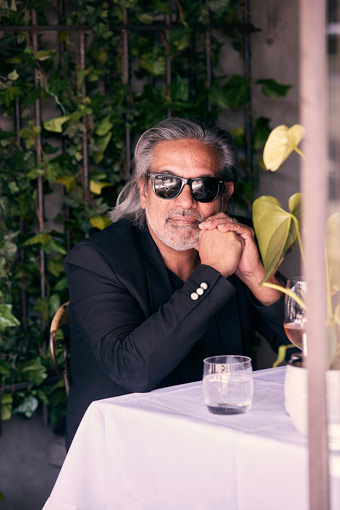
Chris Rupe
Times have changed. Baby boomers came through, Generation X came through — they were all drinkers. Now, the millennials are coming through, and they’ve left us flat on our stomach because they don’t drink. They drink water!
Today it’s evolving rapidly with the introduction of the TV cooking shows. And it’s all about what you eat, how much you eat, and it’s price-point driven. Health, plant-based protein, organics, less sugar, less carbs were words that never came up, but they’re factors that we all take into account these days. Value for money, price point, nutrition and portion size all come into play.
My biggest issue has always been portion size — trying to reduce portion sizes without offending people. When my wife and I go out, we share an entrée and a main — we just can’t eat those big portions. That’s what millennials do as well. Bloody millennials!
Along came My Food Bag and a lot of restaurants took a hit from that, then came Uber Eats, and amongst all that came the lower alcohol limits for driving, so the odds have been stacked against us a little bit. Then again, you can only look each other in the eyes every night for so long before you have to go out for dinner, so they all come back.
I was always intrigued by hotels, restaurants — that type of lifestyle. It was something I really enjoyed from an early age. In 1978, when I was 18, I started a five-year hotel management diploma at the Rose Park Hotel in Parnell, and then I travelled overseas and worked as a waiter, a maître d’, a manager. Restaurants seemed to have a bit more flair and personality and they had the ability to change, whereas the hotel was staid and corporate. You’re able to express yourself a lot more in restaurants, I felt, and you had more freedom.
At 33, I came back to New Zealand and worked at Prego restaurant review: Metro Top 50 2018" href="/food/food-restaurants/prego-restaurant-review-metro-top-50-2018" data-id="92154" data-mce-href="/food/food-restaurants/prego-restaurant-review-metro-top-50-2018">Prego. I became involved in SPQR in 1995 with one partnership and then another three years later, and it’s been as is since then.
I’m truly grateful for all the locals, the customers over the years, because they’ve been very loyal and they’re respectful of the place, too, probably because they want to come back. Anything can happen at SPQR, and I’m sure it does.
It has changed a lot over the years. Back then it was fun, there were fewer restaurants around and they were more profitable. To a certain extent there was more passion, really. Now it has become more commercial.
I’m still there because I enjoy it. Valentino retired at 76… he had it pretty cruisy, though; probably did a couple of sketches and that was it!
Chris Rupe opened Augustus Bistro in 2016.
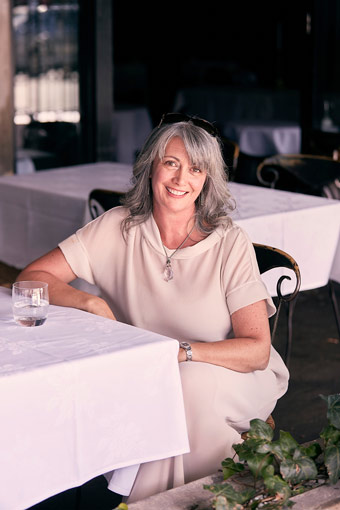
Krishna Botica
I started working in the cafe at Auckland Art Gallery when I was 13, more than 30 years ago. My mum worked there — she was an amazing baker and made the scones every day. I did everything from food prep to till service to clearing, and shooing away pigeons and sparrows and wiping up bird poo. I loved it — it was social, it was active, it was people-oriented. We did things like strawberries and brie in a croissant — that was flash Harry food.
When I was 17, I went overseas, and ended up working in a pub in London. I lied to get my first job — I said I could carry three plates when I had no idea what I was doing. They said to me after the first week, “We knew you lied, but you’ve got a good work ethic and that’s why we gave you a chance.”
I came back in the early 90s and started my degree in English and Italian. I worked at Cafe Iguana, then Guadalupe on K’ Rd, then Prego. Guadalupe had the younger set, when for a long time the market had been dictated by white corporate men. Guadalupe broke the norm. Now it’s 20-something Asian females who dictate the market, so it has changed remarkably since then. We’ve got more people from overseas, and the Asian community has brought an amazing level of sophistication, and many of us have developed a deep regard for the cultures that provide the cuisine.
I say I was at Prego for 24 years, though two and a half years of that was at SPQR as they were owned by the same people. Those were heady days — it morphed from Italian eatery to bar seamlessly over the course of the 16 hours that it was open.
In my early years at Prego or Guadalupe, we didn’t have to know about the provenance of the product, regional authenticity, the culture and the cultural norms of the way European food was served.
In the finer-dining establishments, that was provided by the host, who was often the centre of attention, and the kitchen was hidden away.
The people side of it was exhilarating enough for me. I really had no idea what they did in their own time, or what made them all crazy and happy… I was very naive. I had no idea staff were drinking behind the bar — I would wait till 11 o’clock when we were allowed to have our shot.
There’s always been plenty of shenanigans. I remember two guests at SPQR broke the sink in the toilets because they were having sex in there. Back then, there were quite a few halfway houses around so we’d put the staff on high alert when there was a full moon, because really weird stuff would happen.
Margaret [well-known frequenter of Ponsonby and Karangahape Rds at the time] punched me in the ribs once. She’d started to disturb some other patrons, so I was like, “Come on, Margaret, we need to go out the side door, we need to have a chat.” She turned and went, “Oh, give me a hug,” and I was like, “Oh god, here we go,” so I went to give her a hug and she pulled my hair and gave me an uppercut in the ribs.
I used to use red and yellow cards to control our regular customers at Prego, my way of communicating with them to keep it cool. I’d keep the cards under my bra strap and poke them out from underneath my top and make sure I grabbed their eye, and just go, “You’re in the yellow-card zone, you don’t want to go there.”
Krishna Botica is co-owner of Comensa Group, which owns and operates Cafe Hanoi restaurant review: Metro Top 50 2018" href="/food/food-restaurants/cafe-hanoi-restaurant-review-metro-top-50-2018" data-id="92435" data-mce-href="/food/food-restaurants/cafe-hanoi-restaurant-review-metro-top-50-2018">Cafe Hanoi, Saan and Xuxu Dumpling Bar.

